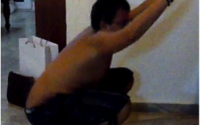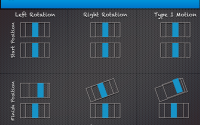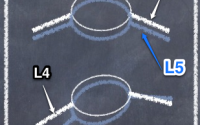Working Out How a Joint Moves
We got stuck into some complex stuff last week, looking at Fryettes laws. So today I thought it would be nice to look behind some of the complexity at the underpinnings…how do you name a joint movement and how do you work out what is going on at a joint?
It’s interesting that most of the focus in movement is on the joint movements/ranges. It becomes even more fascinating when you take that little step back and look at the bone movements. This is the road to working out how a joint is moving.
When I was taught about joints it was as simple as naming the physiological movements…flexion, extension, internal rotation, external rotation etc. However, there is a big step missing from that thought process…how the joint achieves the motions? This is important for quite a few reasons, but the one that sticks out for me is that each physiological movement can be achieved in 5 different ways. If you don’t know which of the 5 ways the joint is achieving the motion you will be limited in finding successful strategies.
A joint is named by what the distal bone does relative to the proximal bone. This is a constant, so actually, to work out the joint motion and how it is achieved all you have to do is work this out. It’s easy to do in isolated or simple movements, it gets a little more tricky when you are using big, fast, complex movements.
Lets look at a simple example. If you are looking at the right knee, to achieve internal rotation the tibia has to rotate left relative to the femur. The simplest way is by the femur staying stationary and the tibia rotating left…internal rotation!! However, it isn’t quite that simple in function, because in function both the proximal and distal bones will be moving.
We’ll stick with the right knee and look at the front leg in gait to explore a functional example. In the front leg in gait the driver is bottom up, so the rotation driven by the STJ pronation will drive the tibia faster than the femur. The rotation force from pronation causes the tibia to rotate left. The rotation force is passed up the kinetic chain, causing the femur to rotate left. As I said the force is bottom up so the tibia will rotate left faster than the femur. So in the front leg in gait the knee will feel internal rotation because the tibia and femur are both rotating left, but the tibia is rotating faster.
The internal rotation is achieved because as a result of the motion the tibia ends up rotated left relative to the femur….internal rotation. So now we best look at the rotation in the knee as a back foot in gait
You know the process that we just went through. So I’ll make this one quick. The driver is top down, the force rotates the femur right. The knock on effect will cause the tibia to rotate right. Because the force is top down, the femur will rotate right faster, which will mean that as a result of the movement the tibia will end up left relative to the femur…internal rotation…phew!!!
The thing you will notice is that the knee is internally rotating as a front and back foot, but the way it achieves each is totally different. Therefore, when you are trying to solve movement puzzles, your strategies would be very different depending on how the motion is achieved.
Remember…bones move, joints feel and muscles react.
Physioblogger


